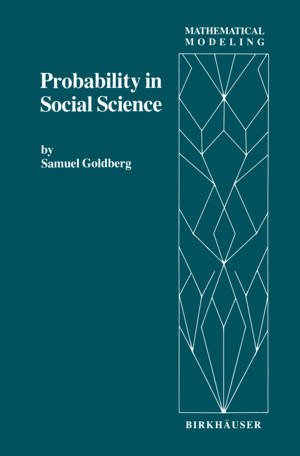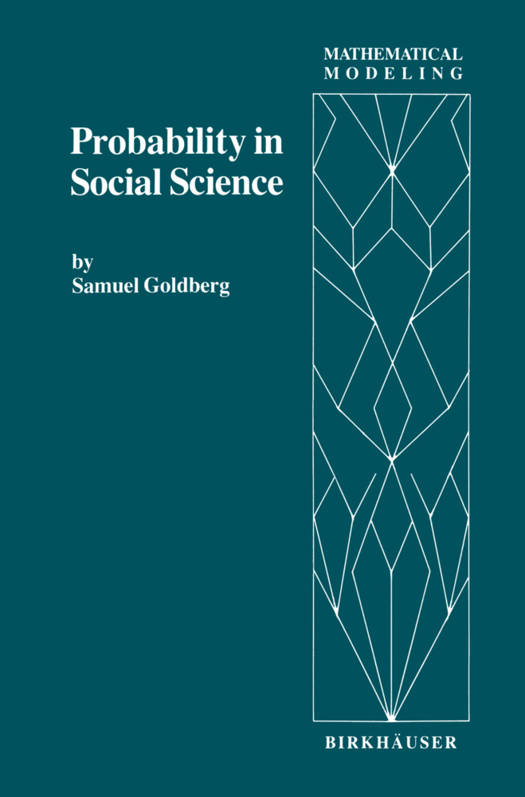
En raison d'une grêve chez bpost, votre commande pourrait être retardée. Vous avez besoin d’un livre rapidement ? Nos magasins vous accueillent à bras ouverts !
- Retrait gratuit dans votre magasin Club
- 7.000.000 titres dans notre catalogue
- Payer en toute sécurité
- Toujours un magasin près de chez vous
En raison de la grêve chez bpost, votre commande pourrait être retardée. Vous avez besoin d’un livre rapidement ? Nos magasins vous accueillent à bras ouverts !
- Retrait gratuit dans votre magasin Club
- 7.000.0000 titres dans notre catalogue
- Payer en toute sécurité
- Toujours un magasin près de chez vous
Probability in Social Science
Seven Expository Units Illustrating the Use of Probability Methods and Models, with Exercises, and Bibliographies to Guide Further Reading in the Social Science and Mathematics Literatures
S Goldberg
83,95 €
+ 167 points
Format
Description
Birkhauser Boston, Inc., will publish a series of carefully selected mono- graphs in the area of mathematical modeling to present serious applications of mathematics for both the undergraduate and the professional audience. Some of the monographs to be selected and published will appeal more to the professional mathematician and user of mathematics, serving to familiarize the user with new models and new methods. Some, like the present monograph, will stress the educational aspect and will appeal more to a student audience, either as a textbook or as additional reading. We feel that this first volume in the series may in itself serve as a model for our program. Samuel Goldberg attaches a high priority to teaching stu- dents the art of modeling, that is, to use his words, the art of constructing useful mathematical models of real-world phenomena. We concur. It is our strong conviction as editors that the connection between the actual problems and their mathematical models must be factually plausible, if not actually real. As this first volume in the new series goes to press, we invite its readers to share with us both their criticisms and their constructive suggestions.
Spécifications
Parties prenantes
- Auteur(s) :
- Editeur:
Contenu
- Nombre de pages :
- 120
- Langue:
- Anglais
- Collection :
- Tome:
- n° 1
Caractéristiques
- EAN:
- 9781461256182
- Date de parution :
- 19-10-11
- Format:
- Livre broché
- Format numérique:
- Trade paperback (VS)
- Dimensions :
- 156 mm x 234 mm
- Poids :
- 199 g

Les avis
Nous publions uniquement les avis qui respectent les conditions requises. Consultez nos conditions pour les avis.






